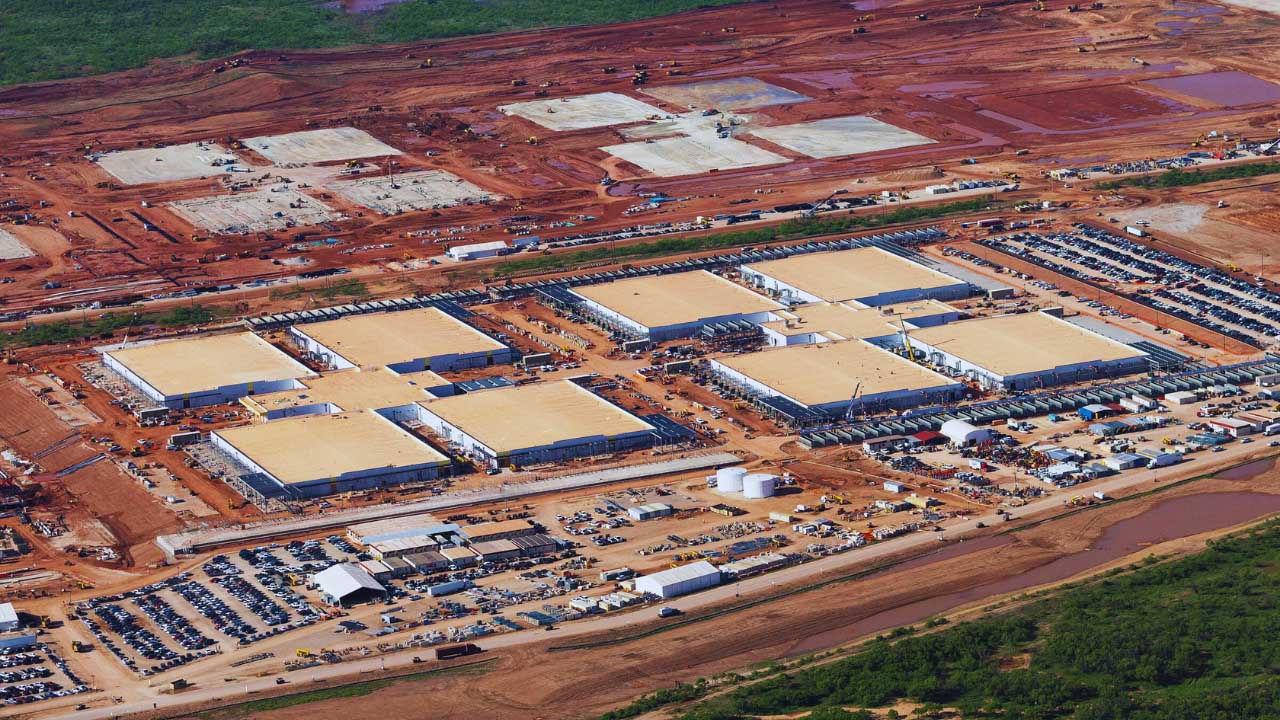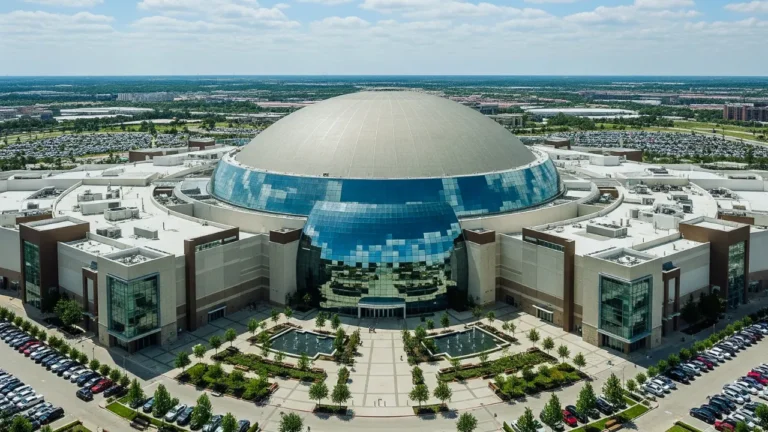Stargate: Inside the Half-Trillion-Dollar AI Infrastructure Megaproject Reshaping Global Power
Artificial intelligence now sits at the center of global competition, and the world’s most powerful nations are racing to build the infrastructure that will support it. OpenAI has taken the most aggressive step yet. The company is preparing to spend five hundred billion dollars on a network of supercomputing campuses larger than anything ever attempted by the private sector in the United States. The scale rivals national infrastructure systems, yet it exists for one purpose: to fuel the next era of AI. When I read the early engineering briefs, I understood how enormous this project felt because the energy demands alone seemed unreal.
Why AI Now Demands Its Own National-Scale Infrastructure
Artificial intelligence no longer depends on standard data centers. The scale of modern models pushes engineers to build entire power networks, cooling systems, and supply chains from scratch. Training GPT-4 in 2023 required tens of thousands of GPUs. Training models beyond GPT-5 will require millions of specialized AI chips, each running at extreme temperatures and energy loads.
The jump in computing needs is not a luxury. AI models grow in size and complexity with every generation. When you train them, you must run enormous calculations across chips linked by high-speed interconnect systems. These machines work nonstop, and they demand more electricity than many industrial plants. You start to see why AI research now resembles an engineering and infrastructure battle instead of a pure software challenge.
Countries once built railroads, dams, and power stations to support national growth. Today, AI has become the next foundation of progress, and OpenAI believes it cannot rely on traditional data centers to push the field forward. That thinking led to the birth of Stargate.
What Stargate Actually Is?
Stargate is a network of supercomputing campuses stretching across the United States. The first campus stands in Abilene, Texas, on roughly 900 acres of land. Engineers describe it as a cluster of eight massive data halls, each designed to support about fifty thousand Nvidia Blackwell-class AI chips. The total capacity reaches roughly four hundred thousand chips at this single location.
For context, the training run for GPT-4 required about twenty thousand chips. This means the Texas campus alone has twenty times the computing power that trained one of the most capable AI systems ever deployed.
OpenAI and its partners plan to build several more Stargate campuses by 2029. Each site will act as a complete ecosystem of computing, cooling, storage, network routing, backup power, and physical security. The design goal is simple: build a nationwide backbone for advanced AI research, with scale that no existing data center operator can match.
Also Read: Chongqing Metro: The World’s Most Extreme Transit System
Recent planning documents reveal that the Texas site includes seismic-resistant foundations, high-density liquid cooling channels, and dedicated fiber corridors that connect the campus directly to Oracle’s national cloud network. Engineers expect total internal network speeds to reach several petabytes per second across the full system once fully operational.
Why the Name Matters
The name Stargate came from early cooling-system drawings that showed a large circular layout. Engineers joked that it looked like a science-fiction portal. The name stuck because it captured the idea of a gateway to an entirely new chapter of computing. You can sense the ambition: each campus becomes a doorway to breakthroughs in medicine, climate science, materials research, and advanced robotics.
In an interview with senior project engineers, several described the facility as “a power plant for intelligence.” I understood the emotion behind that phrase once I looked at the power data.
How Stargate Will Be Powered
The Texas site alone will draw roughly one point two gigawatts of electricity. That equals the power usage of more than one million homes. The existing regional grid cannot handle that load, so the project includes new natural-gas power plants, high-voltage transmission lines, and backup turbine systems built on-site.
Construction teams are also integrating next-generation cooling towers that minimize water loss. Designers have also evaluated dry-cooling systems, geothermal loops, and modular cooling blocks for remote expansions. New information from Texas regulators confirms that the facility will use a hybrid water-cooling system designed to recycle most of its output, which helps reduce the strain on local water supplies.
This level of infrastructure engineering is one of the core reasons the total project cost has pushed toward half a trillion dollars.
Who Is Funding Stargate
OpenAI holds about forty percent of the project’s ownership. SoftBank holds another forty percent, with the rest shared between Oracle and MGX, a new OpenAI-linked venture focused on long-term AI infrastructure. Oracle has already committed around forty billion dollars for chip purchases and cloud integration.
Microsoft, OpenAI’s closest partner in other ventures, has not invested directly in Stargate. Instead, Microsoft holds priority access rights to use the computing power once the campuses go live. This protects Microsoft’s position in the global cloud and AI market without requiring them to share equity.
Behind the scenes, the U.S. government supports the project through accelerated permits, energy approvals, and coordination with federal cybersecurity agencies. Washington understands that computing power has become a strategic asset similar to oil, aviation, and nuclear technology.
A Race Against Time
All Stargate sites must be completed by 2029. Every campus spans hundreds of acres, and each one requires specialized equipment that global suppliers struggle to deliver. Nvidia Blackwell chips remain in short supply, and other AI companies in China, Europe, and the Gulf region compete for the same hardware.
China, for example, has already expanded its AI superclusters in Shanghai and Shenzhen, using both domestic chips and alternative architectures to bypass U.S. export controls. If the United States slows down, it risks losing a strategic technological lead.
You start to understand why OpenAI and its partners treat the timeline with such urgency.
Why Other Countries Are Joining the Concept
Stargate is not limited to the United States. The UAE’s G42 group has committed twenty billion dollars to build a second site in Abu Dhabi. OpenAI has launched a program called “for countries,” which offers Stargate-style campuses to national governments. Early discussions involve the United Kingdom, France, Germany, Saudi Arabia, and Japan.
Computing power is becoming a form of national security. Nations that control access to advanced AI systems will shape global influence, economic growth, and scientific breakthroughs. You can compare this trend to the early oil boom, because raw compute is turning into the core fuel of technological power.
What Breakthroughs Stargate Could Unlock
With millions of high-performance chips linked together, researchers could simulate complex molecules in hours. That kind of power accelerates drug discovery and material science. It can improve extreme-weather prediction, model wildfire behavior, and support fusion-energy research.
Engineers expect that Stargate will also support the research path toward more general forms of AI. These systems may reason, learn, and adapt across many tasks. Whether you agree with that direction or not, the engineering behind it requires computational power far beyond what the world currently has.
The Challenges That Could Slow the Project
Raising five hundred billion dollars remains one of the biggest obstacles. AI companies still search for stable long-term revenue models. The supply of advanced chips remains tight. Environmental concerns continue to grow, as these campuses require high energy usage and large cooling systems. Some experts worry about the carbon footprint if natural gas remains the primary power source.
There is also political risk. If the project succeeds, Stargate becomes a national asset. If it fails, it becomes one of the costliest errors in tech history.
Also Read: Russia’s Mega Projects: Transforming a Nation Through Vision and Scale
Where the Project Stands Now
Construction in Texas is underway. Crews have cleared land, graded access roads, and begun foundation work for the first data halls. Oracle has already placed orders for hundreds of thousands of chips. The Abu Dhabi site is moving through design and regulatory stages.
The next five years will decide the future of AI infrastructure. You can feel the pressure inside the engineering teams because every delay could shift global leadership.
A Defining Moment for AI Infrastructure
Stargate sits at the center of the world’s most intense technological race. It represents a belief that AI will reshape entire industries and that the world needs infrastructure equal to that challenge. If OpenAI succeeds, the United States could hold a decisive edge in global computing power. If it fails, it becomes a reminder of how ambition demands flawless execution.
No matter how the story ends, the race for AI infrastructure has already changed the world.







